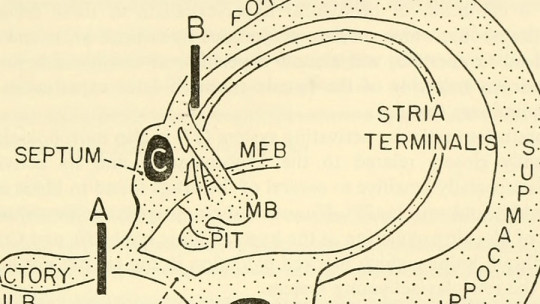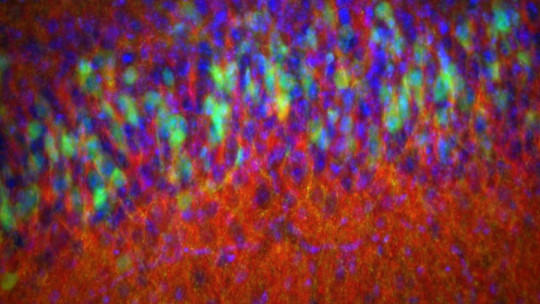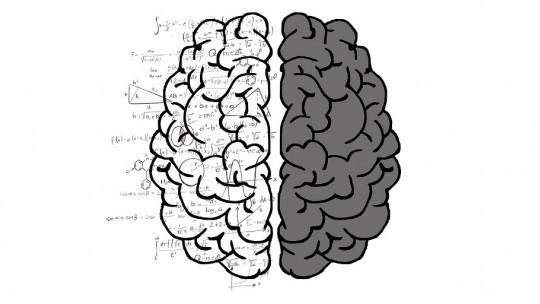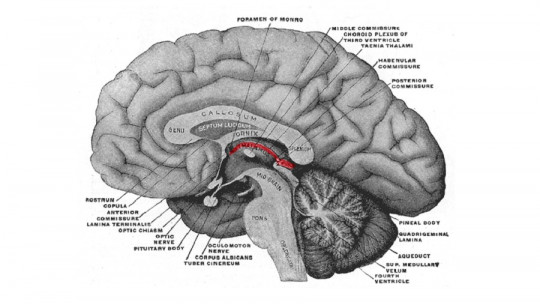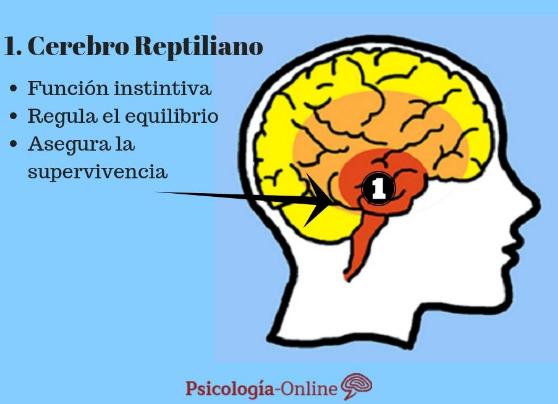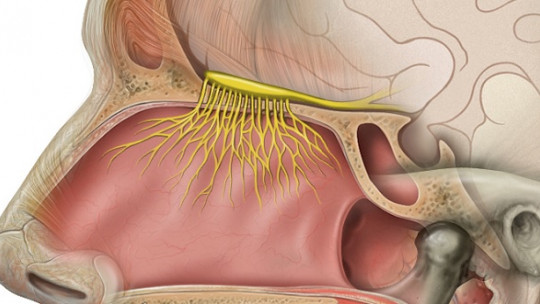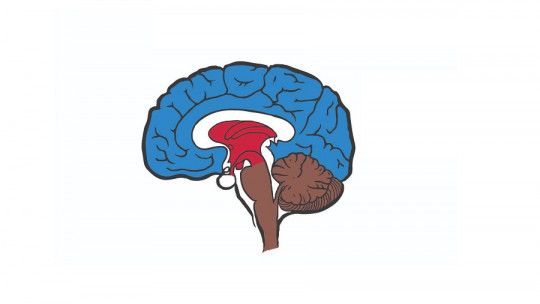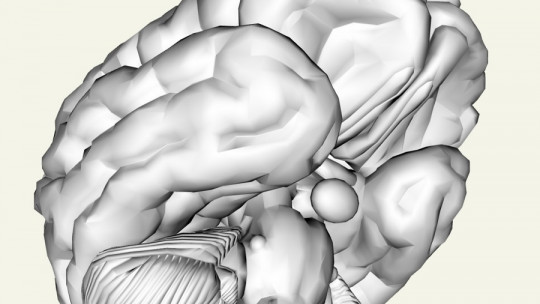The functioning of the human brain is based on four main blocks: the neocortex, responsible for motor activity, planning or attention; the basal ganglia, responsible for controlling movement; the reticular formation, responsible for vital functions such as sleep, wakefulness or cardiovascular control; and the limbic system, formerly called rhinencephalon center of emotional management and the olfactory system.
Let’s see what exactly the rhinencephalon is, and what brain functions are attributed to it.
What is the rhinencephalon?
The rhinencephalon is currently known as the part of the brain related to smell and included within the limbic system or “emotional brain”
With the increase in the differentiation of the other senses in vertebrates, smell has been losing prominence. However, the fundamental connections of the olfactory mechanism with both visceral and somatic activities are as important in humans as in other mammals, although olfactory sensitivity is lower.
The rhinencephalon, being interconnected with the hypothalamus (center responsible for homeostasis or organic balance) and with several areas of emotional control, It helps us concentrate all the information that comes from outside and that we translate into processes through which we perceive, learn, act and remember.
We must not forget that the sense of smell is up to 10 thousand times more sensitive than any other of our senses, and that the olfactory response is immediate and extends directly to the brain. It is also estimated that we have 100 million receptors for the olfactory sensation.
It is believed that human beings can capture up to 7 primary odors: camphor, musk, flowers, mint, ether, acrid and rotten , odors that would correspond to the seven types of receptors existing in the olfactory mucosa. However, research data from recent years indicate that there are at least a hundred primary odor sensations.
Location in the brain
In humans, we can locate the rhinencephalon in the lower lateral part of the brain, just between the eyes, and above it is the frontal lobe
In the upper portion of the nasal cavity there is a small area called the olfactory epithelium. This area contains between 10 and 100 million olfactory receptors, and each of them is actually a neuron that has olfactory cilia sensitive to the chemical stimuli of odorants.
These neurons emit extensions that gather in groups (called axons) and that form two nerves known as olfactory nerves. These are directed towards the brain and end their journey in an area of gray matter called the olfactory bulb. The information will travel a path from the bulb, through the olfactory tract, until reaching the primary olfactory area of the cerebral cortex
It is in the cortex where we finally consciously perceive a certain smell, and from this brain area the nerve pathways that communicate with other systems such as the limbic or the hypothalamus, areas responsible for many of the emotional responses associated with smells or olfactory memories, begin. .
Parts of this nervous system structure
The bodies of these neurons emit extensions called axons that meet in groups and group together to form two nerves called olfactory nerves. These approach the brain and end in a collection of gray matter called the olfactory bulb.
The captured information passes through the medulla and reaches other structures of the limbic system, a network of interconnected structures located near the medial part of the brain. The main structures of this system, of which the rhinencephalon is a part, are the following :
1. Hypothalamus
This brain structure, located in the diencephalon, has a fundamental role in the regulation of vital functions such as body temperature, hunger and thirst, sexual impulses or the regulation of mood.
He achieves all this by acting as a bridge between the cerberus and the endocrine system releasing torrents of hormones and playing a coordinating role in the autonomic nervous system.
2. Hippocampus
It is a small curved and elongated structure, located in the inner part of the temporal lobe, very close to the thalamus and the tonsils. It is involved in the regulation of mental processes such as memory, memory retrieval, spatial location or orientation
Although at first it was thought that this structure was directly involved in smell as a central component of the rhinencephalon, today its involvement in odor memory is more debated.
3. Amygdala
The tonsils are located next to the hippocampus and, therefore, we have one in each cerebral hemisphere. Its function is related to the learned emotional response that elicit certain contexts and situations, and therefore also with emotional learning.
This structure is, therefore, one of the main nuclei for controlling emotions such as fear or anger. Hence it is an important structure to understand how smells can alter our mood awakening emotions or evoking memories.
4. Orbitofrontal cortex
At the limits of the limbic system we can find the orbitofrontal cortex, the escape valve for emotional orders to areas of the frontal lobe responsible for generating strategies and planning.
Therefore, it has a very prominent role in calming the most primitive and “irrational” impulses that come directly from the limbic system and acting as a filter for some signals, letting through only those that serve to achieve the objectives defined in the goals. in the medium or long term.
5. Olfactory bulb
It is a small vesicular structure composed of a pair of protuberances located in the olfactory epithelium and below the frontal lobes It is believed to be responsible for detecting, differentiating and amplifying odors and our sensitivity to them. This structure also stands out for being an area where there is adult neurogenesis, that is, the generation of new neurons throughout life.
In animals it has an influence on sexual behavior, defensive and aggressive behaviors, as well as the care of offspring.
Features
Our rhinencephalon converts chemical signals into perception and electrical impulses that travel through our brain in order to fulfill the following vital functions:
The olfactory system and memory
Another body structure to take into account when talking about the olfactory system, beyond the importance of the rhinencephalon, is one known to all of us: the nose, the olfactory organ par excellence. If it weren’t for it, we would be unable to perceive the vast range of smells that our towns and cities emanate day and night. However, the processing of odors goes beyond this very visible part of our body
Olfactory molecules that are dispersed in the environment come into contact with the nasal mucosa and reach the receptors of the olfactory epithelium. The receptor neurons send information to the olfactory bulb through electrical impulses. And from there, to the limbic system, responsible for centrifuging our brain, stimulating our system of memories and associated emotions
When perceiving a specific smell, we look for a relationship with a stored memory and if we don’t have it, we make it up. Depending on the type of memory that is evoked, mood can change or remain unchanged It is what happens to us when we evoke memories of our childhood, of nature, of the perfume of a person we met, etc.
The effect is so powerful that our brain does not distinguish between the real situation and the situation evoked thanks to the olfactory effect. If the perceived smell is not associated with any memory, the experience of that moment will determine whether that moment in the future will be associated with a positive memory, a dangerous situation, a sad situation, etc.
All of this, of course, happens in our brain automatically and unconsciously, without the direct participation of our conscious attention ; The rhinencephalon and other associated biological structures take care of this discreetly. In many cases, from that moment on, that particular smell or aroma will be what motivates our future actions and what generates our acceptance or rejection of the circumstances associated with it.

